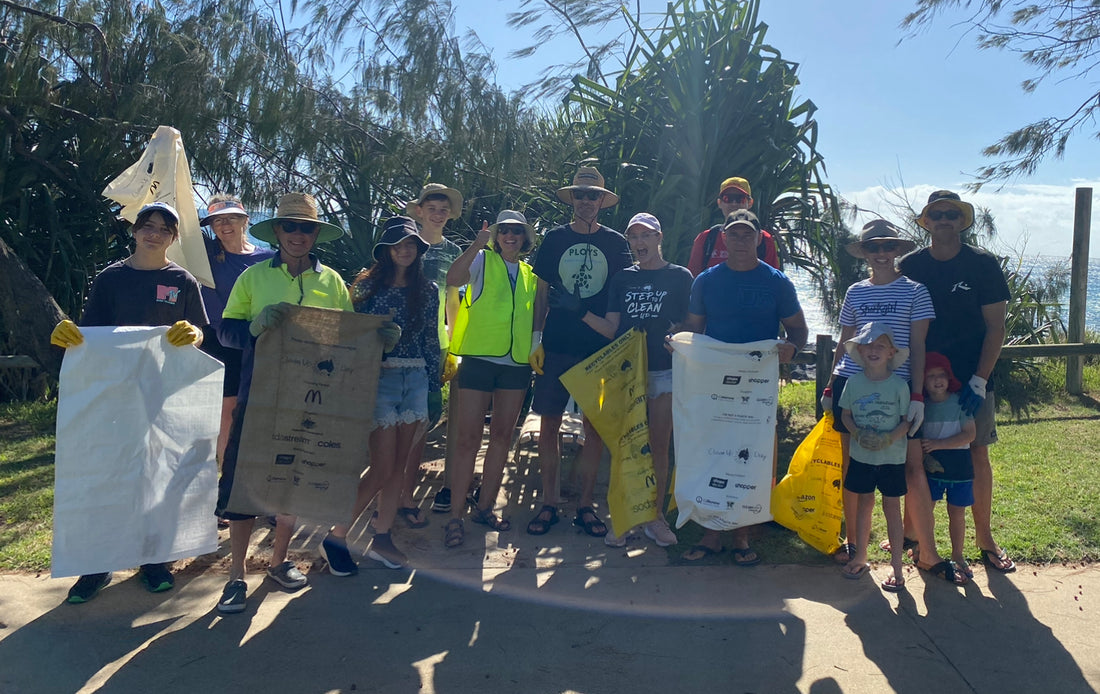
World Environment Day - what can you do to help our environment?
How are we managing and caring for our environment?
World Environment Day is celebrated annually on 5 June and encourages awareness and environmental initiatives It is supported by many non-governmental organizations, businesses, government entities, and represents the primary outreach day supporting the environment.
Let's explore what Australia is doing in Environmental Initiatives, how are we reducing our pollution?
Australia is a country with a diverse range of industries, and as such, there are several sources of pollution that have significant impacts on the environment.
Energy Production
One of our biggest pollutants is the energy production as Australia relies heavily on coal, oil, and gas, which are major sources of greenhouse gas emissions. The burning of fossil fuels for energy production is a significant contributor to air pollution and climate change.
Mining
The next biggest is our Mining: Australia is a major producer of coal, minerals, and metals, and mining activities can have significant impacts on the environment. Mining can lead to land degradation, deforestation, water pollution and water mining, and habitat destruction. We all see the large mining areas and its impact it has on our Rain Forrest's, landscape and habit within.
As our country is so widely spread, transportation sector is a significant source of air pollution in Australia, particularly in suburbian areas. Cars, trucks, and buses emit pollutants such as nitrogen oxides and carbon monoxide. Do you already drive an EV (Electric Vehicle)? At PLOYS we replaced one diesel car for two electric cars and next to saving money on fuel it's a such a good feeling to drive with no emmisions!
Australia's farming industry with use of fertilizer and pesticide contribute to soil and water pollution, and livestock farming produces methane, a potent greenhouse gas. More and more farms are now building dams to filter the pollutants to minimise the impact of farming on the Great Barrier Reef.
And then not to forget the waste we create in production yet also in our households. Landfills and waste incineration releases greenhouse gases and other pollutants into the air, disposal of plastics and products hard to disintegrate and improper disposal of hazardous waste can contaminate soil and water and impact on living creatures, such as sealife.

It's not all doom and gloom the World, including Australia is making changes to reduce the impacts of pollution on climate warming and our environment, and is part of the Paris Agreement and Kyoto Protocol. Agreed not fast or widely reaching, as yet to Globally reduce warming by 1.5 to 2 degrees by 2030....
Although climate change action needs to be massively increased to achieve those goals of the Paris Agreement, the years since its start in 2016, have already sparked low-carbon solutions with carbon neutrality targets. Zero-carbon solutions are becoming competitive across economic sectors representing 25% of emissions. This trend is most noticeable in the power and transport sectors, which is a huge area where Australia can reduce impact.
The Kyoto Protocol (1997, 2005) operationalizes the United Nations Framework Convention on Climate Change by committing industrialized countries and economies to limit and reduce greenhouse gases emissions in accordance with agreed individual targets.
What can we do in and around our home and neighbourhood?
World Environment Day is a great opportunity to raise awareness about environmental issues and take action to make a positive impact in your neighbourhood. Here are some ideas that you and your community could consider for a sustainable neighbourhood:
1. Organize a community cleanup: Gather volunteers and organize a litter cleanup in your neighbourhood to help keep it clean and prevent pollution.
2. Plant trees and native plants: Planting trees and native plants can help to improve air and water quality, provide habitat for wildlife, and reduce erosion.
3. Host a recycling drive: Encourage your community to recycle by hosting a recycling drive. Collect items that can be recycled, such as paper, plastic, pool inflatables and glass, and take them to a local recycling center.
4. Start a community garden: A community garden can help to beautify your neighbourhood, provide fresh produce, and bring people together.
5. Host an educational event: Host an educational event to raise awareness about environmental issues and encourage people to take action. Invite speakers to discuss topics like climate change, sustainable living, and environmental conservation.
6. Reduce your carbon footprint: Encourage your community to reduce their carbon footprint by walking, cycling, or taking public transportation instead of driving. You could also organize a carpooling system to reduce emissions or consider an electric vehicle when replacing your car.
7. Use eco-friendly ideas and products: Encourage people to use eco-friendly products, such as reusable bags, water bottles, and food containers, to reduce waste.
8. Hold a wearable art competition: Get kids and families involve in your own wearable art competition and use household recyclables to show of your creativity. Of course recycle appropriately afterwards!
Remember, even small actions can make a big difference. By working together, you and your community can help to create a more sustainable and environmentally friendly neighbourhood.


